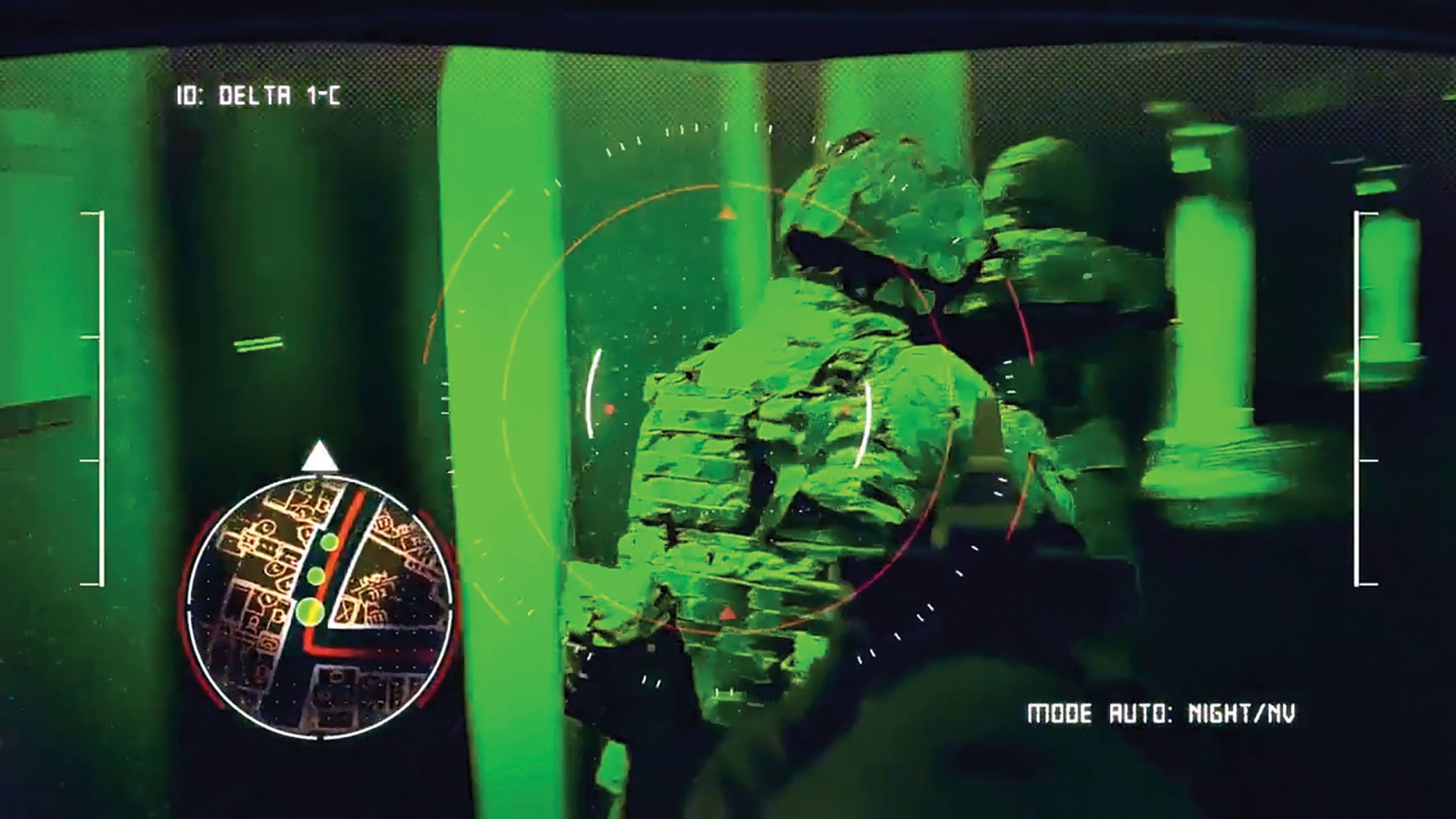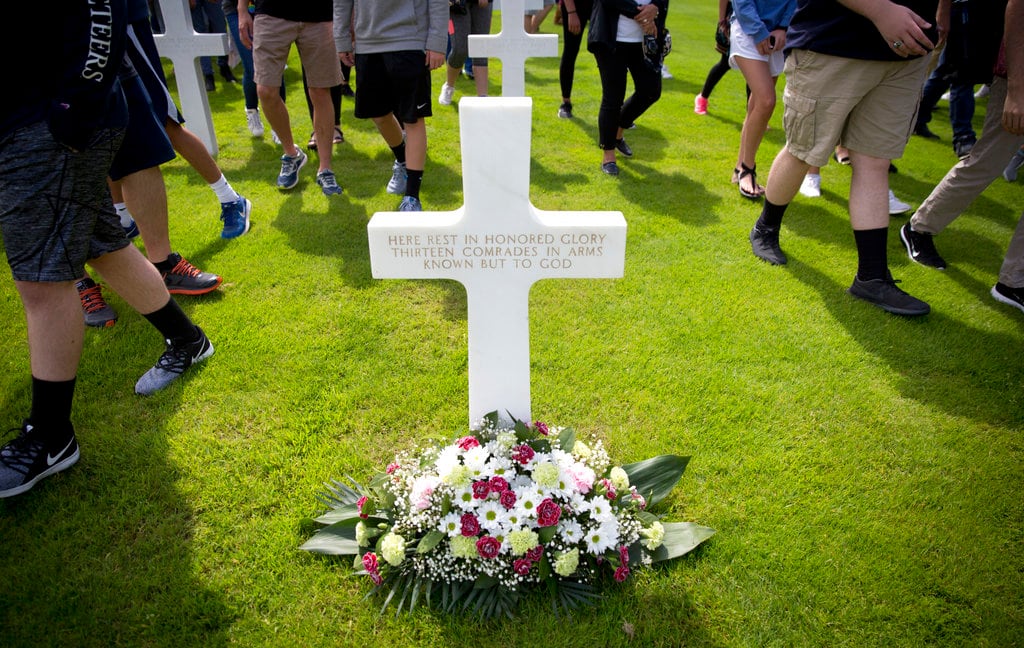SPRINGFIELD, Va. – The Army is building a kind of technological backbone that top leaders hope will cut cables, reduce batteries, trim weight and share data from the individual soldier across the force.
The Adaptive Squad Architecture, under Program Executive Office-Soldier, unveiled a near-total reorganization to their structure and new focus on making all things soldier tech compatible with this system.
PEO Soldier commander Brig. Gen. Anthony Potts told a room of more than 100 industry invitees here today that the ASA is the beginning of a vision for seeing the soldier and squad as a platform on par with a missile system, Abrams tank or Black Hawk helicopter.
RELATED

Some of the broad sketches of ASA were shared with Army Times in an October 2018 interview, but at that stage the main focus of the program was reducing power requirements. By fueling power to all of the devices on the soldier, from radio communications to advance weapons optics, developers hoped to lighten the load.
In this push to industry, which set out a near-term timeline, Potts emphasized especially the “interface” of the system. How standardized connectors, software language and other items would help add new capabilities now in the commercial sphere and those not yet built.
That’s a lot of tech talk that might not matter to some soldiers until they see the final product.
But the big picture of what it can provide will definitely affect their day-to-day lives from home station training to combat.
“We give commanders more options than they ever had before,” Potts said. That’s because through the data analysis a commander can best spread the load of equipment through the formations and account for the flood of variables that face the soldier and squad.
Ammo of the future is supposed to be much lighter. Does that mean the soldier just carries double the ammo, sacrificing the weight savings? Or, do steep mountain inclines mean you still carry today’s ammo quantity but at a lighter load and have more energy when you reach the fight?
“We’re providing trade space for the commander,” Potts said.
Apps for the individual soldier
As part of their efforts, PEO Soldier is standing up a “Soldier Integration Facility,” at its Fort Belvoir, Virginia headquarters. That facility, which will open near the end of September, is where industry ideas and soldier problems sets will see experimentation to quickly find those that will flow through the pipeline down to the Maneuver Battle Lab at Fort Benning, Georgia and the experimental force, Potts said.
But the new facility will also be fed information and trade feedback with more high-tech, conceptual Army programs such as Army Research Labs and the Combat Capabilities Development Command Soldier Center at Natick, Massachusetts.
The program will look at the soldier’s kit much like a smartphone, and the individual items as the apps that are downloaded to give the system new capabilities.
To make that happen, they’ll soon unveil, “Watchtower,” an app store much like what Apple or Android have for smartphone users, said Col. Troy Denomy, head of Soldier Warrior for PEO Soldier. Denomy will soon take over the Soldier Integration Facility.
Basically, it’s a soldier app store.
Potts said he sees potential for very mission-tailored applications that soldiers can download for their needs. The ASA system with those applications would allow for countless individual soldier-configured sets.
Much like the smartphone in one user’s pocket might differ wildly from the one being used by the person right next to them.
Denomy said that a limited version of Watchtower, which is in beta test mode, will roll out at the end of the year and is planned to be fully operational for Army use by fall 2020.
At today’s industry day, John Howell, ASA director, demonstrated a separate web-based application that developers and commanders can use to compare different soldier loads.
An example was outfitting the squad leader with an M249 Squad Automatic Weapon rather than the M4 carbine. That plus the weight and accessories added 30 pounds to his kit and brought red alerts for weight.
The system can also show how certain gear may not work with other gear and give warnings to planners and developers on how changes might affect accuracy, mobility and endurance.
New ‘mixed reality’ device on the way
While ASA seems to be the centerpiece of how the Army’s new vision systems and weapons will collect and exploit data and enable soldiers in the future, much of what has fed into ASA development is coming from a system it will support.
The Integrated Visual Augmentation System, or IVAS, is a mixed reality device still being developed that close combat forces could use as a combined navigation, day/night vision, target acquisition and data delivery headset.
Early prototypes are using the Microsoft HoloLens hardware, currently being used for video gaming, simulation and engineering tasks by civilian users. The eventual product developers hope will be no larger than a pair of sunglasses.
But to make that happen, the IVAS and other items will need to have a way to connect to each other wirelessly and also to other devices, soldiers and even other units.
Oh, and it will have to plug and play nicely with large platform systems such as Bradleys, Strykers, Black Hawks and anything else a dismounted soldier might ride in during the fight.
The first, basic set of IVAS is expected to be delivered by January. Though it won’t field until late 2021, Potts said.
At the same time, the ASA’s “problem sets,” or challenges for the system to solve, will go to industry in January as well, with responses expected by March.
Then the tangible ASA tool, at least a very early version, will be delivered by January 2021, Potts said.
Though, Potts said, those timelines will adjust.
Rather bluntly, the one-star admitted that the ASA development is new territory.
“I promise you, right out the gate, we will get this wrong,” Potts said. “And that’s okay.”
That’s because in the process of figuring out what problems they’re trying to solve, others will arise.
The ASA project will connect with other existing Army tech, both fielded and under development.
For example, the Nett Warrior program uses a Samsung smartphone as the end user device, or EUD. It runs a host of software applications the soldier uses for navigation, targeting data and communicating with other soldiers on the battlefield.
And conformable batteries that slip inside existing harnesses are already being used to power some systems in testing, such as the new thermal sights and target acquisition devices, Potts told Army Times in a previous interview.
The new system will need more processing power and likely more battery, but the beginnings are there, he said.
Todd South has written about crime, courts, government and the military for multiple publications since 2004 and was named a 2014 Pulitzer finalist for a co-written project on witness intimidation. Todd is a Marine veteran of the Iraq War.





